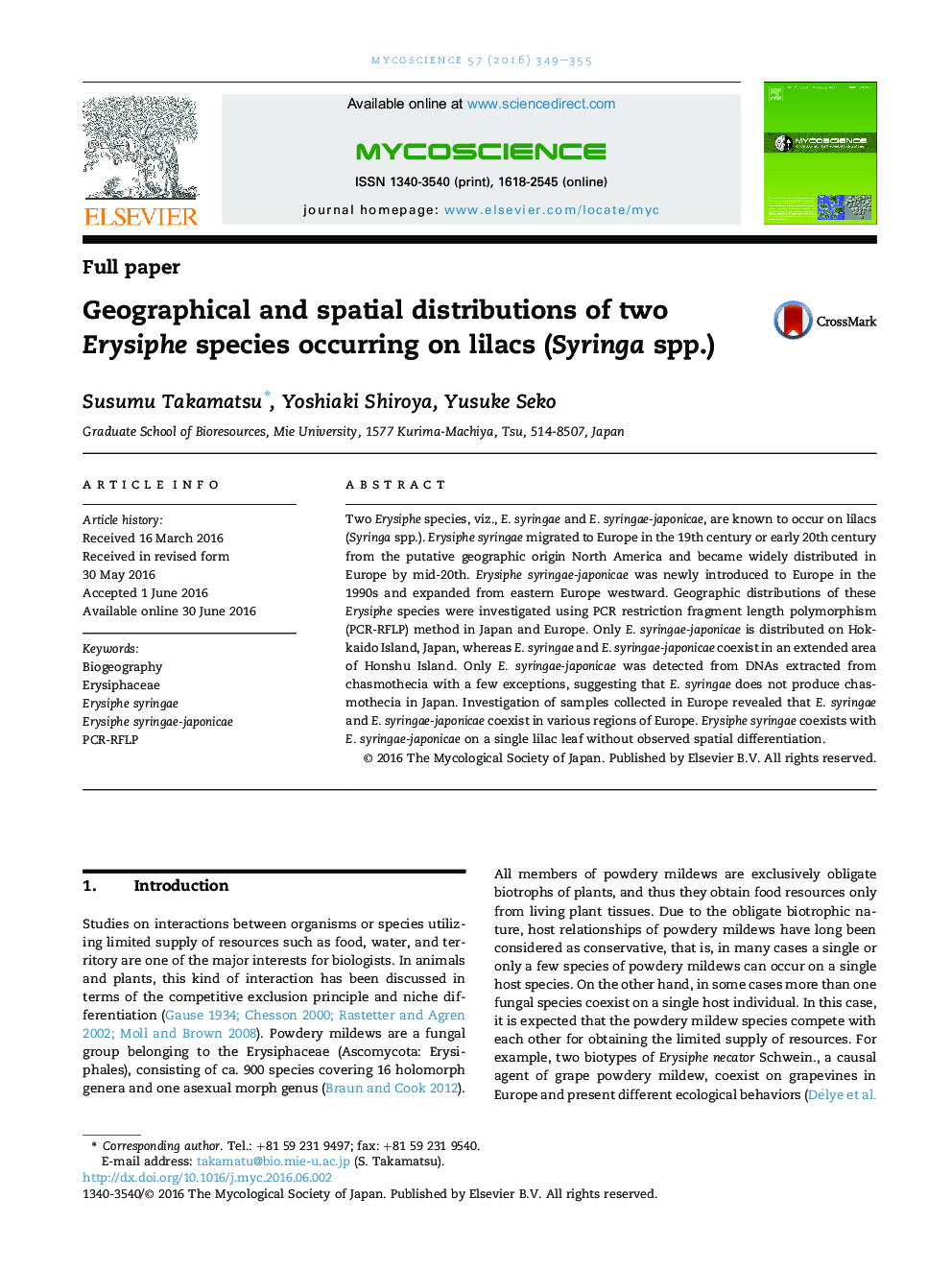| Article ID | Journal | Published Year | Pages | File Type |
|---|---|---|---|---|
| 2060060 | Mycoscience | 2016 | 7 Pages |
•Only E. syringae-japonicae is distributed on Hokkaido Island, Japan.•E. syringae and E. syringae-japonicae coexist in an extended area of Honshu Island.•E. syringae may not produce chasmothecia in Japan.•E. syringae and E. syringae-japonicae coexist in various regions of Europe.•These two species coexist on single lilac leaves without any niche differentiation.
Two Erysiphe species, viz., E. syringae and E. syringae-japonicae, are known to occur on lilacs (Syringa spp.). Erysiphe syringae migrated to Europe in the 19th century or early 20th century from the putative geographic origin North America and became widely distributed in Europe by mid-20th. Erysiphe syringae-japonicae was newly introduced to Europe in the 1990s and expanded from eastern Europe westward. Geographic distributions of these Erysiphe species were investigated using PCR restriction fragment length polymorphism (PCR-RFLP) method in Japan and Europe. Only E. syringae-japonicae is distributed on Hokkaido Island, Japan, whereas E. syringae and E. syringae-japonicae coexist in an extended area of Honshu Island. Only E. syringae-japonicae was detected from DNAs extracted from chasmothecia with a few exceptions, suggesting that E. syringae does not produce chasmothecia in Japan. Investigation of samples collected in Europe revealed that E. syringae and E. syringae-japonicae coexist in various regions of Europe. Erysiphe syringae coexists with E. syringae-japonicae on a single lilac leaf without observed spatial differentiation.
